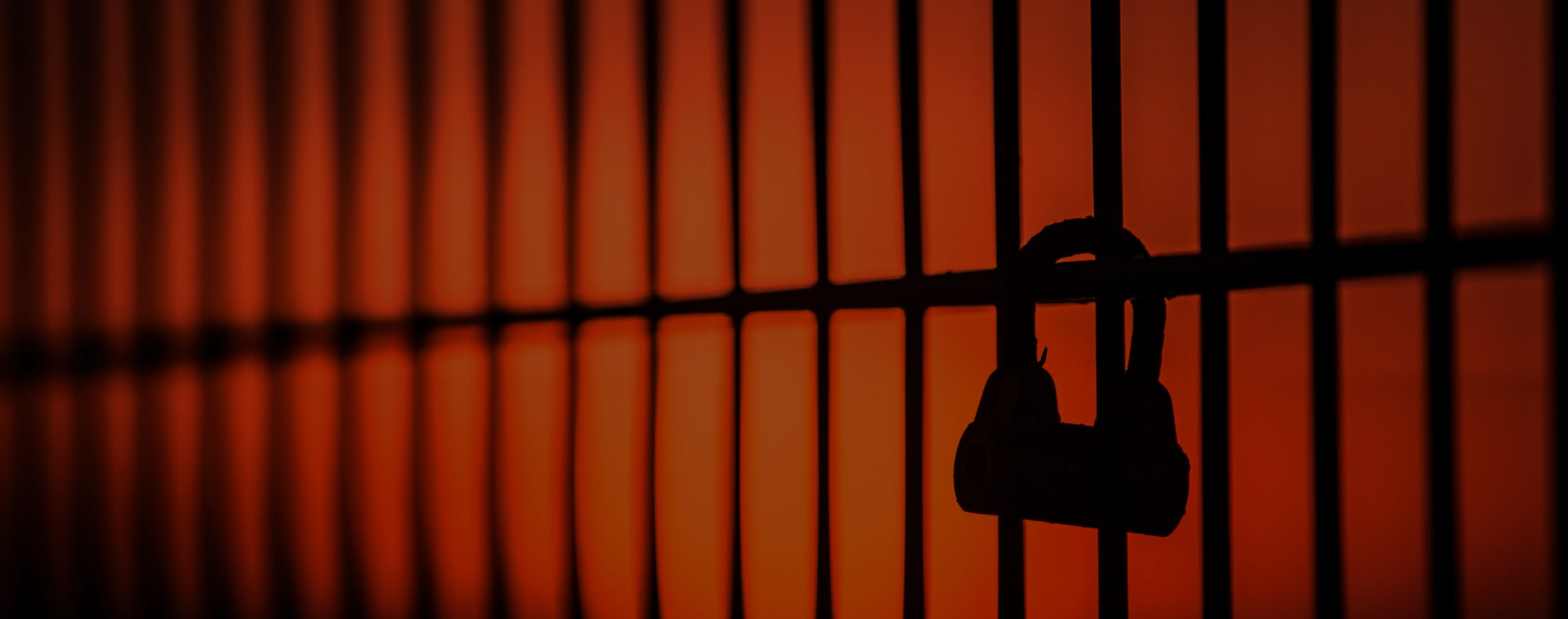Prison agencies across the country have long resisted progressive reform. But with COVID-19 pushing court proceedings to a crawl, reducing the number of felony cases to a trickle and slowing the flow of people transferring to prison, some agencies have begun floating plans to close prison units and reinvest the saved dollars elsewhere. This might sound like decarceral progress, but don’t be fooled: It’s a problem. Many of these plans are rushed responses, and few have been studied for their impacts. As more agencies develop similar ideas, one point remains unchanged: Despite the reform-slanted buzz words — talk of “closures” and “reinvestments” — these plans will not move us towards decarceration.
Emphatic statements that sound in reform are often met with skepticism — maybe more so when coming from me, as people (perhaps rightly) expect that the decade I’ve spent living in prison makes it hard for me to remain “free” of anything, including bias. But the problems with these plans are uncomplicated. Consider the one in my home state.
Read the closure plan
Facility Closure Plan, Washington State Department of Corrections
Responding to an average daily population that has fallen 20 percent since January 2020, the Washington State Department of Corrections announced a plan on May 25, 2021, to close 18 living units and to redirect saved funds to expand a home-detention program. The plan, the state claims, will “driv[e] change and provid[e] resources for individuals to advance a safe and successful transition to the community.” But the change runs in the wrong direction. Under a narrative of decarceration and reform, the plan would actually harm prisoners, shutter the few existing programming-dense units, and in the end expand the state’s carceral footprint.
The closure plan creates at least three problems.
The first problem is a return to overcrowding. It’s only been over the course of the pandemic that units have become less saturated, giving prisoners space to breathe and move and in some cases live in a cell by themselves. In an environment where privacy and personal space are scarce, these factors have been a welcome reprieve. But the unit closures will change all this by shuffling prisoners around the state, crowding them, sardine-style, wherever prison officials finds room.
The second problem is the compounding of geographic disparities. As 13 of the 18 units selected for closure lie on the western side of Washington State, where the majority of people live, the closures would force many more prisoners to the rural eastern side, far away from their communities. The existing arrangement of units already skews roughly 40 percent of prison beds towards the inland side — far outweighing the proportion of people from that area — and closing the identified units would only make this imbalance worse.
Why these geographic disparities matter may not be obvious to the public, but it is to prisoners. The enormous struggles families and friends already endure just to visit will get much worse when the person they’d like to see is cast to an isolated unit on the eastern side. What was once a quick jaunt down the road will quickly become a four-or-more-hour trek, presenting a logistical challenge that for some proves insurmountable. Even if the visitor owns a car, can afford the gas, and doesn’t mind staying overnight in a poorly-kept-but-highly-priced motel room, there’s still the matter of time: It’s one thing to set aside an afternoon for a visit; it’s something else entirely to commit a full weekend.
And as with many other aspects of the prison system, people of color will be harmed the most. By and large, Washington’s communities of color reside in the west, along the I-5 corridor between Everett, Seattle, and Tacoma. So with far fewer units near these cities, it’s unquestionable that disruptions will disproportionately fall on their shoulders.
The third problem is the elimination of pro-social, programming-dense environments. Consider the Washington State Reformatory — arguably the most-programmatically comprehensive facility the state operates — which would see all four of its living units shut down. Closest to Seattle, with a 40-minute travel time, WSR enjoys a base of community volunteers unimaginable at locations farther from metropolitan areas. These volunteers — 600 strong and more numerous than all other facilities combined — regularly enter the prison to facilitate and support an array of programs, all of which contribute to a singular, community-focused prison culture.
University Beyond Bars, a college-in-prison program credited as being the keystone to WSR’s culture, is a prime example. This privately funded nonprofit offers pathways to both associate’s and bachelor’s degrees and draws instructors from prestigious local schools, including Seattle Central College, Seattle University, and the University of Washington. No other program in the state offers such quality education.
Other programs specialize in conflict resolution and restorative justice. The list is long, but its top includes Alternatives to Violence, Non-Violent Communication, Bridges to Life, and HEAL Circles. Many of these are proven to reduce future contacts with the criminal legal system. Few are available at other facilities.
Also found at WSR are cultural and social-justice groups such as the Black Prisoners Caucus, Concerned Lifers Organization, Latino Development Organization, and Alliances Gender and Sexuality Group. These grassroots groups not only cultivate space where prisoners and community members can learn about and look to improve issues facing vulnerable and marginalized communities, but many have also been sought out by public officials for insight into policymaking.
WSR is, quite literally, the paradigm for restorative, community-focused facilities.
A true decarceral movement has to remember those of us who are on the inside now, and will remain here for years to come. And it has to realize that our quality of life isn’t binary — in or out.
tomas keen
From the prisoner perspective, I can tell you what closing the 13 western-lying units would mean: a return to cramped living, reduced visits from loved ones, and fewer units that foster pro-social environments. All of this is antithetical to decarceration, which has to be about more than just shrinking the number of people in prison. A true decarceral movement has to remember those of us who are on the inside now, and will remain here for years to come. And it has to realize that our quality of life isn’t binary — in or out. What happens within prison walls has an enormous impact on us and those around us, including when prisons close.
As bad as closing these units sounds, for prisoners transferred to home detention under the second phase of the state’s plan, the outcome is no better. The home-detention program, called Graduated Reentry, or GRE, allows certain prisoners to spend the last 5 to 18 months of their sentences in the community on a GPS monitor. But for all its hype, this program does little for those offered entry.
The Department of Corrections praises the program because, in its words, “people are more successful when they transition into a community and are supported by resources before, during, and after that transition.” Yet the program doesn’t do this. It includes a transition, surely, but almost no resources are provided to participants. Those who can’t otherwise find housing are given a six-month rental voucher. But help ends there. Assistance with finding a job, training in financial literacy, help with transportation needs — for people entering the community the list of needs goes on and on. Yet GRE offers no help with these challenges.
There’s a simple reason for this: GRE is about surveillance, nothing more. The funds that the state saves with the unit closures and reinvests to “leverage more resources to support . . . the GRE program” are not going to participants — they’re already designated for hiring 140 new staff members. And these staff will not be reentry specialists — they will be community corrections officers, people whose job begins and ends with ensuring conditions of release are not violated.
That’s why at regular check-ins it’s common for participants to hear from these officers: “Have you violated any conditions?” But a question they never ask is: “What can I do to help you succeed?”
As a person who formerly transitioned from prison to the community — sadly, unsuccessfully — I can tell you that so-called supervision doesn’t work. People exiting prison do not need supervision; they need support. Many return to neighborhoods in crisis and are immediately forced into survival mode. Most have no desire to commit crimes. But they do have a desire to survive, and sometimes this leads to activities that are criminal.
GRE does nothing to fix that.
This plan will actually expand the carceral footprint.
The many problems with the state’s plan are elementary. But buried beneath the buzz words, the misguided unit closures, and the expansion of a little-better-than-worthless program is an even simpler reason to give it the deep six: This plan will actually expand the carceral footprint. Every closed unit would be — in corrections parlance — a “warm closure,” allowing it to come back online in a moment’s notice. And that’s exactly what will happen. As society reopens, the court system will reactivate — that is, the backlog of felony cases will dwindle, sending new admissions down the pipeline to prison and spiking the population to pre-COVID levels or beyond. DOC will have no choice but to open and fill the units. So for the price we paid — disrupting the lives of prisoners and their visitors, pulling the plug on numerous programs, and tossing people out on GPS monitors without a real chance of success — DOC will in the end have the same number of prison beds, more officers overseeing its home-detention program, and a whole load of good publicity for trying to “drive change.”
Prisoners and outside supporters flooded the department’s inbox with these critiques, causing a temporary pause in the plan. Soon after, however, in a July 12, 2021 memo, DOC claimed to have incorporated these concerns and developed a new “phased approach.” Yet there’s only one alteration: reducing the number of unit closures by one. As for GRE, it would remain unchanged.
Much of this essay has been Washington-specific, but the lessons have national significance. What we know is that prison agencies may not have diabolical intentions. But they also haven’t taken the time to learn what prisoners, their supporters, and our communities really need — or what will actually advance the goals of decarceration. At this moment in time, we don’t need cost-cutting couched as reinvestment and reform. We need more genuinely supportive environments, and those are accomplished by increasing the number of single-person cells, housing prisoners closer to their communities, investing in quality educational programming, and allowing access to essential technologies. We also need better odds of successful reentry, and that requires connection to resources. These are the ways we should support the millions of people who are currently caught within the penal system’s grasp, as we work more broadly toward decarceration.
I want to believe we can live in a world where fewer humans are housed in cages. I want this not only because it may mean my own liberation, but also because I personally know, as millions of others do, the harm that caging creates. But we won’t get to that world by implementing rushed plans of the sort prison agencies now suggest. And it’s up to us to ensure these plans don’t proceed.
Image: Unsplash
I personally know, as millions of others do, the harm that caging creates. . . . And it’s up to us to ensure these plans don’t proceed.

